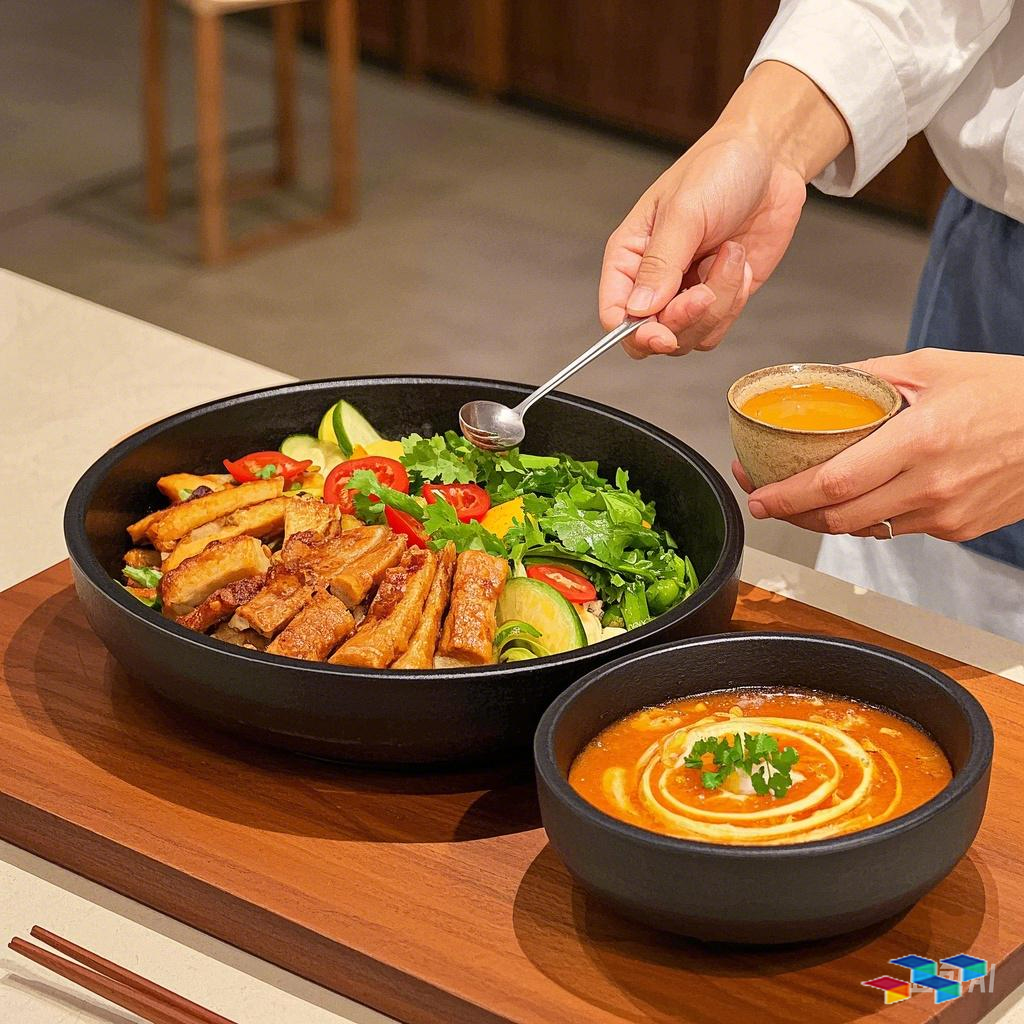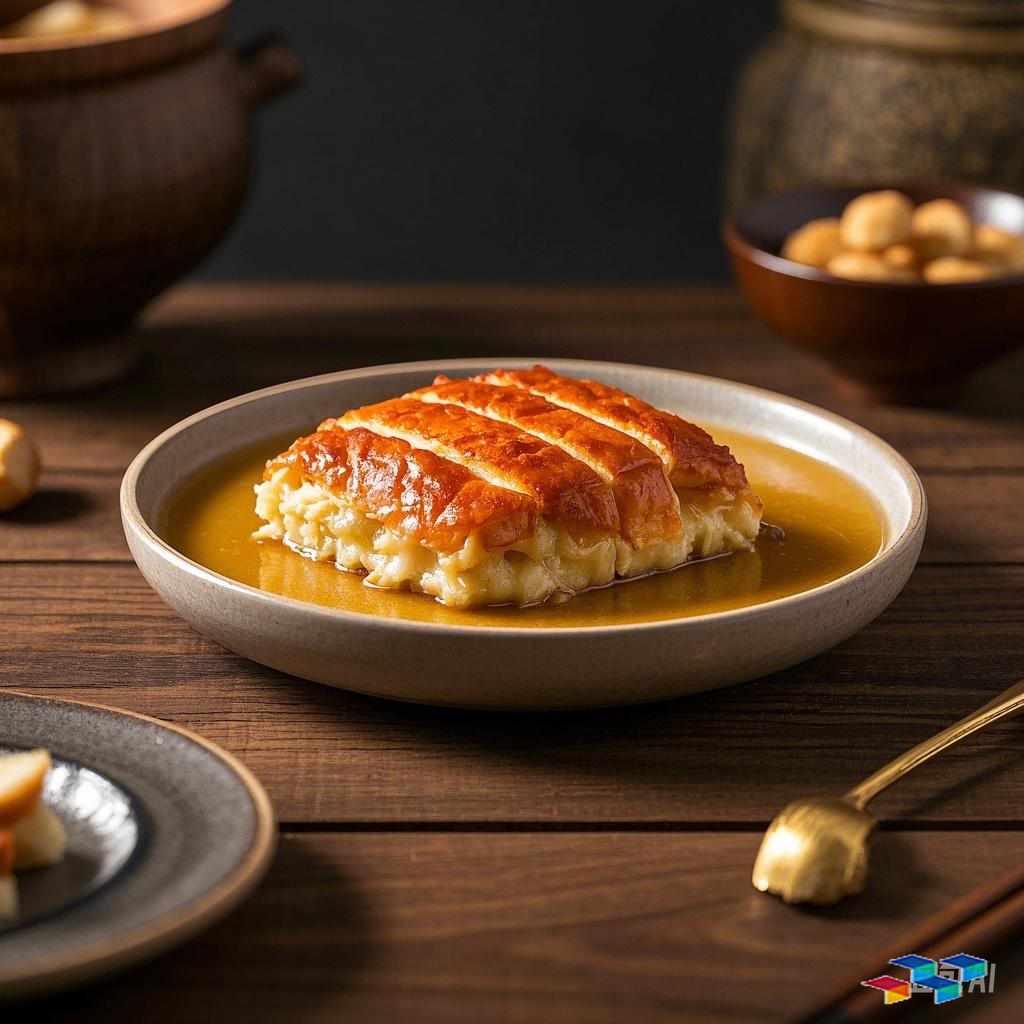草原风情巧妙融入了蒙古族烤全羊和傣族竹筒饭的地域特色
Mongolia and Dai cuisines are treasures of Chinese gastronomy, each bearing the marks of their respective cultures. Today's blog will take you on a journey to explore the unique charm of Mongolian whole lamb roasting and Dai bamboo tube rice, while also sharing some creative and healthy recipes like "oyster sauce Chinese broccoli" and some insights into muscle-building diets. Let's dive in!

蒙古族烤全羊:一场草原的盛宴
Mongolian whole lamb roasting is not just a dish; it is a symbol of hospitality and cultural heritage. Originating from the vast steppes of Inner Mongolia, this dish has been a staple in Mongolian celebrations for centuries. The method involves roasting a whole lamb over an open fire, ensuring that the meat remains tender and juicy while acquiring a smoky aroma.
The preparation of Mongolian whole lamb roasting is a labor of love. The lamb is first cleaned and seasoned with a mix of salt, pepper, and other spices. It is then stuffed with onions, garlic, and sometimes even potatoes before being skewered and roasted. The most critical aspect of this dish is controlling the fire—too hot, and the meat will burn; too low, and it won’t cook properly.
Mongolian whole lamb roasting is traditionally served with a side of homemade yogurt or a spicy dipping sauce. The dish is often accompanied by singing and dancing, making it a true celebration of life and community.
傣族竹筒饭:自然与美食的完美融合
In contrast to the robust flavors of Mongolian cuisine, Dai bamboo tube rice offers a refreshing and delicate taste that reflects the harmony between the Dai people and their natural surroundings. This dish is prepared by filling fresh bamboo tubes with glutinous rice, which is then steamed until perfectly cooked.
The unique aroma of the bamboo infuses the rice, giving it a light and fragrant taste. Dai bamboo tube rice is often served with a side of fresh herbs, pickled vegetables, or a spicy sauce. It’s a dish that not only satisfies the palate but also reminds us of the importance of respecting and utilizing nature’s bounty.
创新与融合:健康与美味的平衡
While traditional dishes like Mongolian whole lamb roasting and Dai bamboo tube rice are delicious, they can sometimes be high in calories or not tailored to modern dietary needs. That’s why we’ve come up with some creative twists to keep things healthy and satisfying.
One such twist is "oyster sauce Chinese broccoli." This dish combines the umami-richness of oyster sauce with the crisp-tender texture of Chinese broccoli, making it a perfect side dish for any meal. Here’s a simple recipe:
Oyster Sauce Chinese Broccoli Recipe 1. Blanch the Chinese broccoli in boiling water for 2-3 minutes until tender. 2. Heat a pan and add a tablespoon of oyster sauce. 3. Toss the blanched broccoli in the oyster sauce until evenly coated. 4. Garnish with sesame seeds and serve.
This dish is not only low in calories but also packed with vitamins and minerals, making it a great option for those looking to maintain a balanced diet.
增肌餐:用美食迎接健康挑战
For those looking to build muscle, traditional dishes like Mongolian whole lamb roasting can be a great source of protein. However, it’s important to balance your intake with other nutrient-rich foods. Here’s a simple muscle-building meal idea inspired by Mongolian and Dai cuisines:
- Main Course: Grilled lamb chops with a side of steamed vegetables. - Carbs: Dai bamboo tube rice for its unique flavor and texture. - Protein Boost: A bowl of quinoa or brown rice for additional protein and fiber.
This meal combines the rich flavors of Mongolian cuisine with the refreshing tones of Dai dishes, providing a balanced and satisfying meal for fitness enthusiasts.
结语:草原风情的完美诠释
Mongolian whole lamb roasting and Dai bamboo tube rice are more than just dishes—they are windows into the rich cultural tapestry of China. By blending tradition with modern twists, we can ensure that these culinary treasures continue to inspire and delight future generations.
Whether you’re enjoying a hearty Mongolian feast or savoring the delicate flavors of Dai bamboo tube rice, these dishes remind us of the deep connection between food and culture. So, the next time you’re looking to explore new flavors, why not take a trip to the grasslands of Mongolia or the lush forests of Yunnan? Your taste buds will thank you!
Until next time, happy cooking and happy exploring!
This blog post is brought to you in collaboration with "食尚探索" and "菜谱大全," your go-to platforms for exploring the world of cuisine and discovering new recipes. Let us know in the comments below which traditional dishes you’d like to see explored next!
作者声明:内容由AI生成


